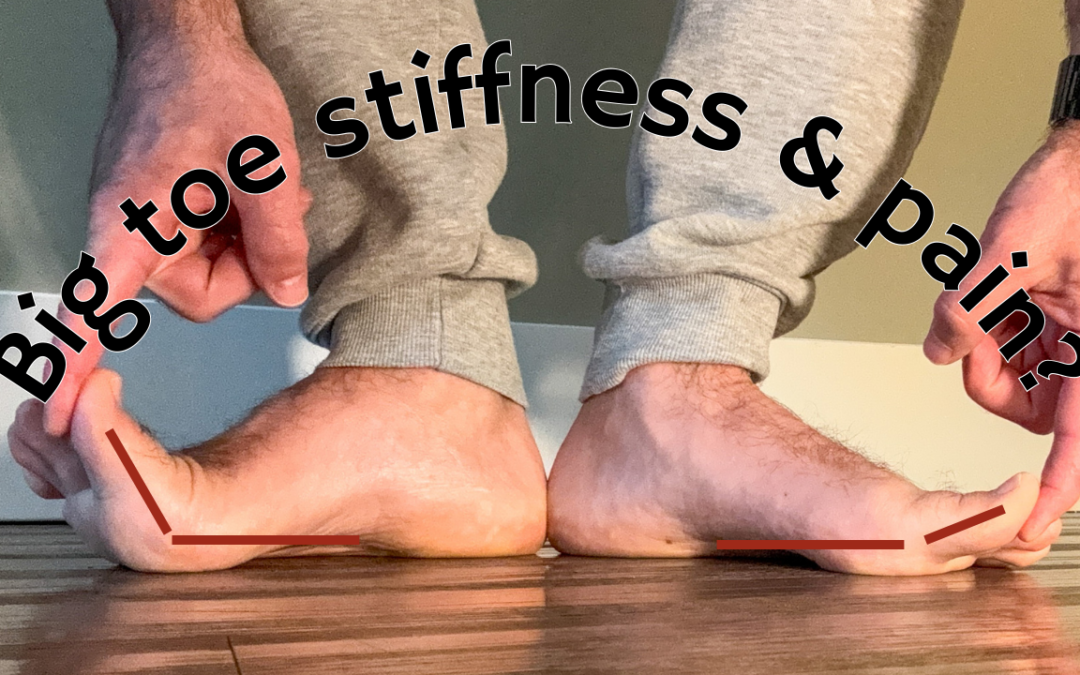A couple of years ago, I started noticing a peculiar snapping sensation in my big toe. It felt like it was out of place until it snapped, and there was a tightness when I stepped back with that foot, especially during lunges. It would come and go. There never seemed to be any swelling. Although I wore good footwear and diligently stretched my toe, it never seemed to improve. The issue didn’t stop me from being active, but it was an ongoing annoyance.
Fast forward to this past winter, during a trip to Las Vegas, the problem escalated. With the extensive walking my big toe would feel really stiff for the first few minutes after standing up and walking again. When I returned home, the discomfort made its debut while I was running and when I bent my big toe back the movement was now significantly less than the other big toe. That’s when it dawned on me: I might be dealing with Hallux Rigidus or Hallux Limitus.
What are Hallux Rigidus and Hallux Limitus?
Hallux Rigidus is a form of degenerative arthritis affecting the metatarsophalangeal (MTP) joint at the base of the big toe. It leads to significant stiffness and, over time, can significantly limit the toe’s range of motion.
Hallux Limitus, on the other hand, is a condition where there is limited but not completely restricted movement in the big toe due to soft tissue tightness. While the toe can still move, its range is reduced. (Lam 2017)
Who Do They Affect and How Common Are They?
These conditions are more common than one might think, often affecting adults, particularly those over 30. Hallux Rigidus is reported to be the second most common disorder of the big toe, following bunions. Hallux Limitus can often precede Hallux Rigidus if not properly managed.
Signs & Symptoms
For both conditions, symptoms can include:
- Pain and stiffness in the big toe, particularly when walking, standing, or engaging in activities that bend the toe.
- Swelling and inflammation around the joint.
- Difficulty in running, squatting, or performing activities that require the big toe to bend upwards.
- A feeling of tightness or a snapping sensation in the toe, as I experienced.
Causes for Hallux Rigidus & Hallux Limitus
Several factors can contribute to the development of these conditions:
- Genetics: A family history of foot problems can increase susceptibility.
- Injury: Trauma to the toe can lead to arthritis and joint issues.
- Overuse: Activities that place repetitive stress on the big toe.
- Abnormal Foot Mechanics: Flat feet or other biomechanical issues can predispose individuals to these conditions.
Prognosis
The prognosis for both Hallux Rigidus and Hallux Limitus depends on early detection and management. While Hallux Limitus can sometimes be managed with conservative treatments such as orthotics, physical therapy, and proper footwear, Hallux Rigidus might require more intensive interventions, including surgery, if left untreated.
Key Facts
- Passive dorsiflexion (i.e. extension or bending the toe upwards) of the big toe is typically between 40 and 100 degrees.
- Walking requires 45-60 degrees of big toe extension.
- During the stance phase of walking, the big toe bears twice the load of the other toes and approximately 40-60% of body weight. (source)
Understanding and addressing these issues is crucial for maintaining an active lifestyle and ensuring that something as fundamental as walking doesn’t become a source of chronic pain. In another post we’ll explore two game-changing treatment options that have helped many people like myself.
Kregg

